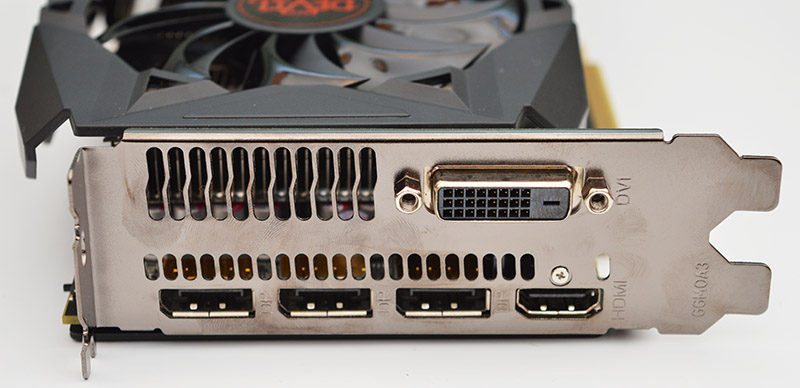PowerColor Red Devil RX 470 Graphics Card Review
John Williamson / 8 years ago
A Closer Look
The PowerColor Red Devil RX 470 doesn’t try to be convoluted and relies on a simplistic, stylish design. More specifically, the attractive matte black shroud is complimented by two red accents which blend together to form a stunning aesthetic. This colour combination ties in with AMD’s signature theme and it’s suitable for a wide range of gaming systems. Please note, PowerColor haven’t incorporated any form of RGB illumination which may be an issue for some users. While it could be argued that RGB lighting is overdone, the ability to cycle between colours or switch the lighting off completely adds a level of customization. Sadly, this isn’t the case here and competing models such as the Sapphire Nitro+ RX 470 OC contain subtle RGB illumination.
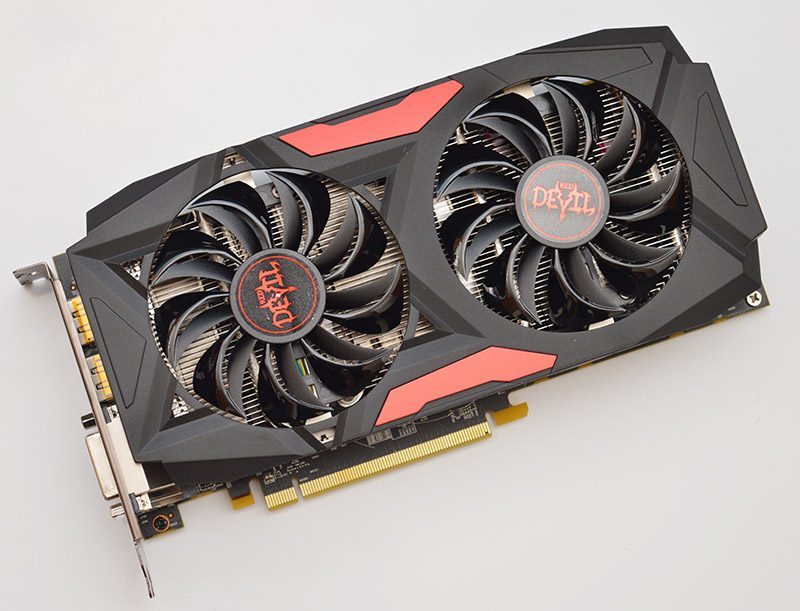
On a more positive note, the GPU includes a backplate which reduces unwanted droop and ensures it doesn’t overhang to one side in a ghastly manner. The backplate’s pattern is rather unusual and I’m not sure if it’s intended to be a face judging by the two circles. Also, the star section is quite reminiscent of a symbol used in Judaism but this is probably just a coincidence. Nevertheless, the backplate is sturdy and features a likeable design.
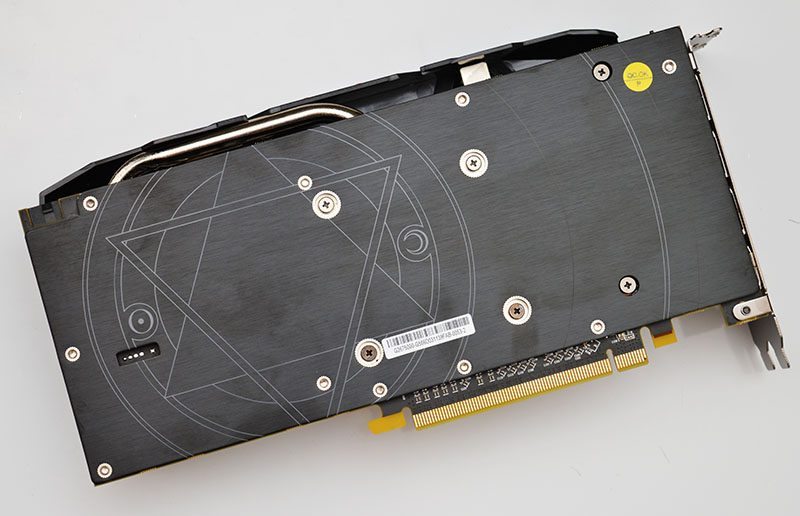
Unlike the PowerColor Red Devil RX 480, the RX 470 opts for a dual-fan arrangement and I’m puzzled why this is the case. Surely, the unit’s 150-watt TDP and similar thermal loads when overclocked warrant the triple-fan design. This means the noise output is higher since the fan blades spin at a faster speed. PowerColor’s dual 90mm fans feature high-angled blades to maximise airflow and reduce the accumulation of dust. Not only that, the fans utilises 9 blades and have two ball bearings resulting in a 20% efficiency gain as well as four times greater longevity. Another great feature is the fans only begin spinning once the temperatures exceed 60C. This means you can enjoy a silent desktop experience when browsing the web, playing casual games and performing other basic tasks.
In terms of power delivery, the graphics card takes advantage of 6+1-phases on a custom PCB to heighten stability at higher clock speeds. Additionally, the PWM uses a digital signal to stabilise the voltage and has a high-speed dynamic response.
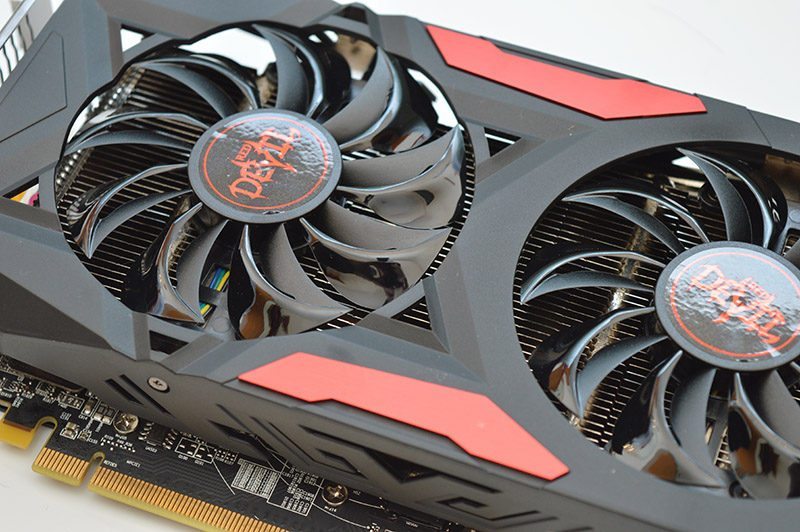
From this angle, we can see the heatsink’s impressive fin array and side intake which enhances thermal dissipation.
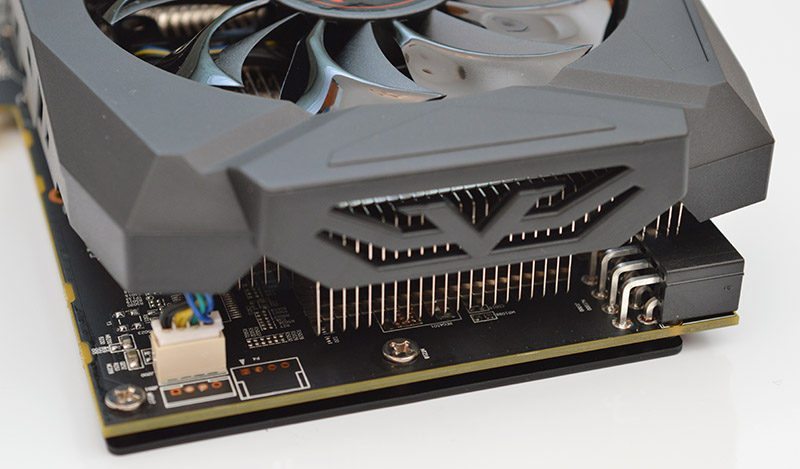
To leverage extra overclocking headroom, PowerColor has selected an 8-pin PCI-E connector.
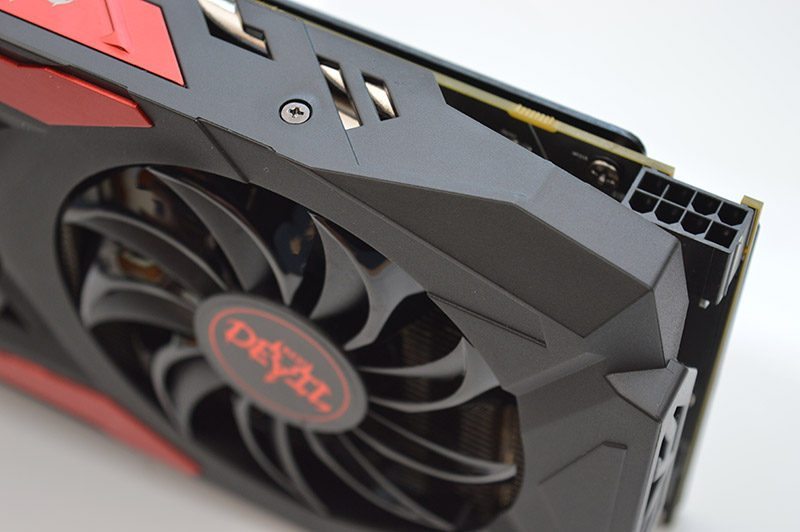
Despite being a fairly compact product, the GPU has multiple 6mm and 8mm heat pipes which retain low temperatures under extreme stress.
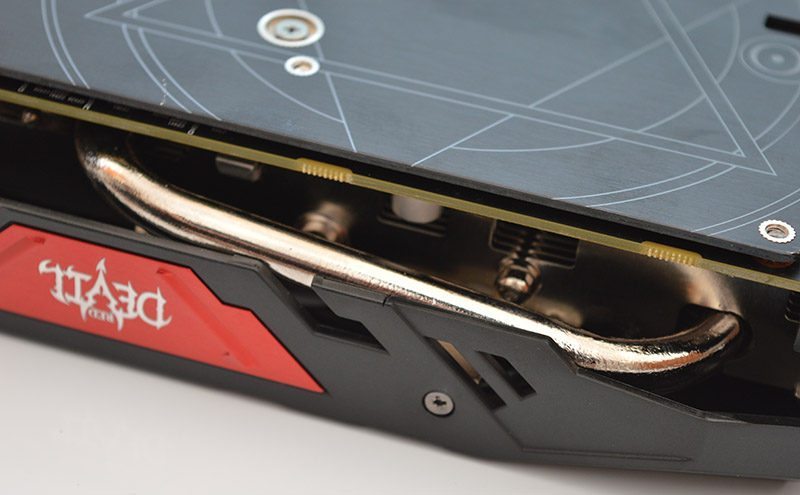
Connectivity-wise, the graphics card has a dual-link DVI-D, three DisplayPort 1.4 and a single HDMI 2.0b connector. There’s also two sections for ventilation which should improve system temperatures.
